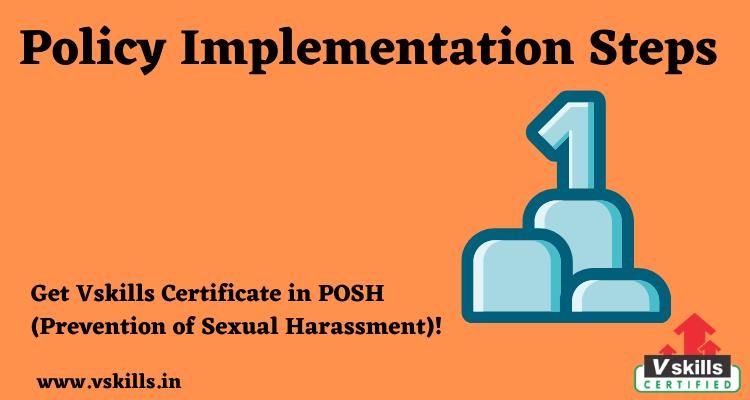
Policy Implementation Steps– Have you ever found yourself in a situation where you have been given the task to write an anti-sexual harassment policy or a procedure? But you don’t want your document to end up like so many others – gathering dust in some forgotten drawer? The following steps will help you.
The steps are designed based on experiences with large and small, government or private, for-profit or non-profit companies.
- Study the requirements – First you have to study very carefully various requirements – is there a legislation which requires something to be put in writing? Or some other high level policy that already exists in your organization (perhaps a corporate standard)?
- Take into account the results of your assessment – Your assessment will determine which issues you have to address in your document, but also to which degree – for instance, you may need to decide whether you will classify your information according to its confidentiality, and if so, whether you need two, three or four levels of confidentiality.
- Optimize and align your document(s)
- Structure your document
- Write your document
- Get your document approved
- Training and awareness of employees
- Communicate the Policy More Than Once
- Make Sure the Policy Has an Effective Complaint Procedure
Implementing successful workplace policies
Policy Implementation steps – Following are some of the necessary steps, skills and expertise when implementing a successful program to eliminate discrimination and harassment in the workplace.
First step:
- Develop policy and procedures to provide information and solutions to ensure harassment and discrimination does not occur within the workplace.
- Disseminate the policy and procedures on a regular basis.
- Ensure managers and supervisors have face to face contact with staff to disseminate the policy and procedures.
Second step:
- Provide training for managers and supervisors to assist them in the identification of unlawful or unacceptable behaviour within the workplace.
- Ensure managers and supervisors communicate and respond appropriately to situations where such behaviour is observed or reported.
- Promotion and education of correct workplace practices by workers’ colleagues and their peers can be very effective.
Skills necessary to implement a successful program
- Managers benefit greatly if they undergo interactive training sessions, with written materials supplied as a backup.
- The primary focus should be on face to face communication.
Any successful program needs expert people trained to step in when managers and supervisors don’t have the level of expertise to undertake remedial action, or they are involved in the unacceptable behaviour themselves. Your procedures need to take this into account.
The outcome of effective policy and procedures
- Reduces the likelihood of misunderstanding and confusion about the organization’s policy and procedures.
- Reduces the likelihood of employer liability.
- Provides a more harmonious work environment.
- Greater productivity
Translating good intent to action through flawless execution
- There needs to be written policy (in all relevant local languages)
- Sexual harassment is a complex subject with several nuances and shades of gray.
- Internal Complaint Committees (ICCs) need to be created in every office and region.
- Have an external expert advise you on this. Involve this person in all investigations.
- The induction process needs to be designed in a way that every woman employee goes through a special session on this topic – the recourse available to her if she is even remotely subjected to any kind of harassment.
- A monthly call with the senior-most executive in every region to inquire into the health of the processes governing the prevention of sexual harassment.


